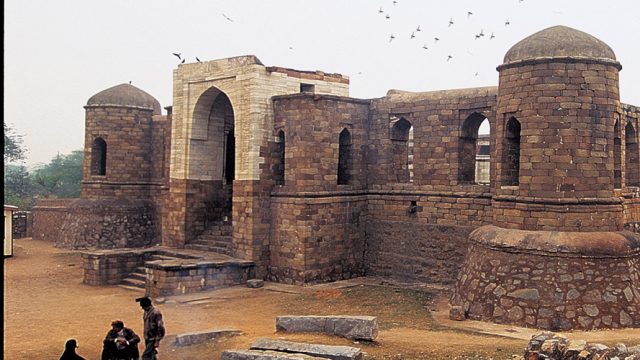The monuments of Delhi cast shadows even at noon, for in their penumbra lie some ancient relics, anonymous for inexplicable reasons. These are astounding pieces of history, though perhaps not as tall as the Qutb Minar or as wide as the Red Fort. We present five among the least-known monuments of Delhi.
Qila Qadam Sharief
Built in 1376 by Feroze Shah Tughlaq, this fort couldn’t survive the rapid urbanisation in the 1970s. Two imposing gateways are woven in tight by a crowded market. Feroze Shah built a tomb for himself here, but had to bury his predeceased son instead. Over the grave was fixed a stone bearing the Prophet’s footprint, giving the fort its name.
Location: In the Ram Nagar area of Paharganj
Zinatul Masjid
Also known as Ghata Masjid, this is one of the most commanding mosques in Old Delhi. It was built in 1707 by Zinatul-Nisa Begum, Aurangzeb’s daughter, a pious woman with a flair for poetry. She also built herself a marble tomb, which was destroyed after the 1857 Revolt. The mosque is even more imposing on the inside.
Location: East of Daryaganj
Shah Jahani Minar
This red sandstone tower was built by the Mughal Emperor Shah Jahan in 1650, close to his hunting lodge. He probably stood on the upper floors of this 50-foot minar surveying the landscape for game during the famous Mughal hunts. Note how obviously it’s inspired by the Qutb Minar.
Location: In Hastsal Village in western Delhi
Muradabad Pahari
This is an old hill topped by two great mosques, from the Tughlaq and Lodi periods each. Covered today with shiny paint, they tower over the landscape. The crumbling remains of one of the most magnificent step-wells built within the Delhi area are here too; its original character is still discernible.
Location: Behind D Block, Vasant Vihar. Ask for Qasai Wala Gumbad. No photography
Sultanghari
The first mausoleum to have been built in the Indian sub-continent. A fort-like construction, it was built by Iltutmish for his son Nasiruddin Mahmud in 1231. The west wall has a marble colonnade and a mihrab, intricately carved with verses from the Quran.
Location: On Mehrauli-Palam Road. If there’s no one to give you a ticket, just walk in




